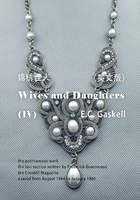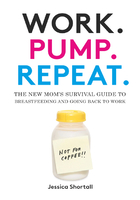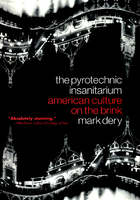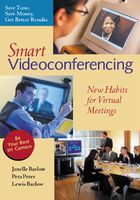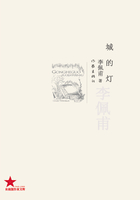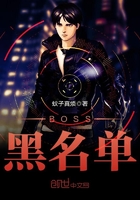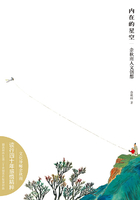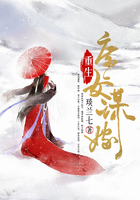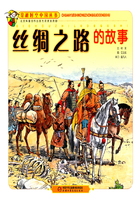Much has been written about the role of values in business. There is, however, a real gap between the writings of business thinkers and pundits and what executives actually have the capability to do. Collectively, we have worked with organizations on values issues for more than 50 years, helping executives build the capability to understand and act on their values. Given the realities of the business world in the twenty-first century, we believe it is time for one more book-one that goes beyond platitudes and acknowledges how difficult it is to know and act on one's values consistently. Values are the wellspring-the foundation-of building a great company.
Business today is inarguably global. There are clashes of values and culture that go on continuously both inside and outside most companies, large and small. We believe that the idea that values are the most important component of how any business creates value is the most important insight in twenty-first-century capitalism as it is practiced around the globe. And there are many misunderstandings about how values work that lead to expensive mistakes. We need a more robust and realistic perspective about values in business, and this book provides such a view. We wrote this book to help executives think through how to be more effective in articulating and acting on their values both personally and in their business lives. We call this view values through conversation (VTC).
What is a value? We will start the conversation here and elaborate in chapter 2. We take a very pragmatic view about values. They represent what is most important to us. Values necessitate a shared understanding of how we are going to behave. When we say that one of our values is integrity, it means that being honest with each other is very important to us. It also means that we need a common understanding, which is often a work in progress, about appropriate behaviors that bring that value to life. Of course, our own values can conflict with one another as well as with those of other people; and the business world constantly produces new situations that demand one think about the values that are appropriate. All of these reasons, and others, are important if we are to bridge the values gap in business.
Structure of the Book
The argument of the book works like this: In part I (chapters 1 through 4), we explain why many businesses have a values gap, and we give many examples from our experience. In part II (chapters 5 through 8), we focus on how to bridge these values gaps and suggest that creating a living conversation about a company's values is the key to success. In part III (chapter 9), we briefly summarize our conclusions and then explore three examples of values gaps and offer specific suggestions for next steps in bringing values to life.
The idea of "values" that has gained some currency in business in recent years is more complex than it first seems. Overall, we need to see acting on values as ongoing conversations in companies that shape options, choices, decisions, and actions as opposed to words that have been carved into stone or embossed on a "values card."
In chapter 1 we set out our view of the values gap that exists for many businesses. In chapter 2 we show how values work in our personal lives, leading to a lifelong project of self-discovery and creation; the chapter focuses on conversations that we have, often with ourselves, about who we are and who we can become. Chapter 3 looks at organizational values and the challenges associated with a business that wants to act on its values. Chapter 4 is a collection of mistakes that we have seen from our experience working with companies on these issues; we show how organizations limit their possibilities for growth and undermine their good intentions by making mistakes that could be avoided.
Chapters 5 through 8 give a detailed account of our method for bridging the values gap, with four different types of values through conversation. Each of these chapters starts with an At a Glance that captures the benefits, principles, and practices of how authentic organizations bring values to life through that form of VTC.
First, there is introspection, the subject of chapter 5. We cannot say much about our values if we are not willing to seriously probe and question our own motives and behavior. Second, there is our history, explored in chapter 6. We are at least partially products of our upbringing, our environment, and our experiences. Understanding different views of our history helps us figure out how to refresh and reinvent what we do while preserving legacy and continuity. Third, we are connected to others, as discussed in chapter 7, which explores and offers insights from companies on how to bridge the values gap through relationships with stakeholders and how to interact, lead, follow, and work together. Finally, we have aspirations-things we want to accomplish, ways we want to live, and our hopes, dreams, and fears-the subject of chapter 8.
Our argument is that by understanding introspective, historical, connectedness, and aspirational aspects of our values, we can bring values to life in our organizations through our conversations; this leads to decisions and actions that bridge the gap between the "talk" and the "walk." And, we argue, if these conversations are authentic, the possibilities for that organization are unlimited. We close with chapter 9, where we summarize our approach and point the way forward.
Method and Sources
Throughout this book we have relied on a number of sources. The first and most important is the broad group of business leaders whom we have had the privilege to work with over the past 25 years. To protect their anonymity, we often refer to them and their companies in a generic manner, such as "Mark was an executive in a multinational corporation." Such examples come from our personal observations and experience. When you see an actual company name, we have either a published source or permission from the company to use that example. Please note that all of our examples are real, and they represent our interpretations of the 50-plus years of our experience helping companies and executives, as well as our own interpretations of the business press, case studies, and other business writing. We are grateful for the experiences and conversations that have so profoundly shaped our thinking.
A second group of businesspeople who have molded our thinking is our students. Both of us teach seasoned executives with many years of experience and wisdom, as well as MBA students with just a few years of experience and a millennial point of view. We have learned a great deal from our students, and we hope that they will recognize some of the ideas, stories, and material in this book as emerging from the discussions and conversations in our classes.
A third set of sources we have benefitted from greatly comprises colleagues around the world, who have spent their careers trying to understand how values in business really work. These thought leaders are consultants, academics, and executives who will recognize what we have learned from them and see their influence on our thinking.
Acknowledgments
The ideas in this book were originally developed in two academic articles, as well as many other things we have written over the course of our careers. These are the main influences on this book: Ellen R. Auster and R. Edward Freeman, "Values and Poetic Organizations: Beyond Value Fit toward Values through Conversation," Journal of Business Ethics 113, no. 1 (2013): 39-49, doi: 10.1007/s10551-012-1279-5; and R. Edward Freeman and Ellen R. Auster, "Values, Authenticity, and Responsible Leadership," Journal of Business Ethics 98, no. 1 (suppl.) (2011): 15-23, doi: 10.1007/s10551-011-1022-7. We are grateful to publishers and editors for giving us permission to recast and reuse this material.
In addition, we would like to express our personal thanks to a number of people and organizations that have supported us and helped us in the process of writing this book.
We are indebted to the team at Berrett-Koehler (BK). Special thanks and gratitude to Neal Maillet, our editor, for inviting us to have the conversation that started this book after he saw us speak at a conscious capitalism conference in Boston and for his deft but calm handling of the publishing process from start to finish. From crowd-sourcing the title to suggestions during our Author Day visit, Neal and the BK team improved this book in so many ways. Thank you to Dianne Platner for her patience and openness with the cover design process. Gary Palmatier handled the production and internal design superbly, and Elizabeth von Radics was phenomenal with the final edit. Steve Piersanti has been a beacon for us throughout the history of Berrett-Koehler as a values-driven organization. His support for our work here has been invaluable.
In addition, we each would like to thank those in our personal circles of support.
Ed Freeman
I would like to thank the Darden School at the University of Virginia, and its sponsor trustees, as well as the Olsson Center for Applied Ethics, the Business Roundtable Institute for Corporate Ethics, and the Institute for Business in Society-all of which have generously supported work on this book. Lauren Purnell, Sergiy Dmytriyev, and the entire ethics team at Darden have made this book better. Conversations with Jim Freeland, Jared Harris, Bidhan Parmar, Sankaran Venkataraman, Andrew Wicks, and others have enriched our understanding of what it means to be authentic and act on one's values. Jenny Mead has made this a much more readable book. And without the daily support of Karen Musselman, the book simply would not exist.
Ellen Auster
Thank you to the Schulich School of Business for their financial support of this work. Bori Csillag dove wholeheartedly into a seemingly chaotic process of flip charts and sticky notes as we brainstormed early-stage chapter outlines. Shannon Auster-Weiss asked the tough questions about what each chapter was really about, did diligent research, and offered a fresh perspective, breakthrough insights, and upbeat energy that was contagious as we drafted the chapters. Lindsey Auster-Weiss provided creativity and wisdom in thinking about the cover and cheered us on throughout the process. Deep gratitude also to Lindsey Auster-Weiss, Shannon Auster-Weiss, and Steve Weiss for sharing love, laughter, and many moments of enlightenment-and for buying the awesome Mother's Day deck couch where much of this writing took place.
I am thankful to Carol Auster for all of her help with things in Canton during the writing of this book. Lisa Hillenbrand and Lesley Simpson shared life's ups and downs, swimming, and yoga and prompted me to think in new ways. Teresa Back streamlined Schulich work and offered her wonderful design expertise. Zippee and Shoji snuggled in and provided healthy distraction whenever I wrote at home, and Chip's sheer joyfulness on our morning jogs so often triggered a valuable thought or idea.

